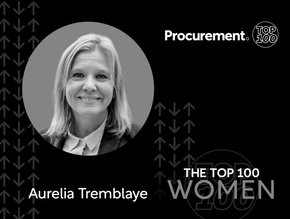Four steps towards achieving a net zero future

The boardrooms of companies worldwide are wrestling with the net zero conundrum, with an increasing number announcing bold carbon reduction targets while lacking a detailed action plan to get there. In the scramble to develop strategies to meet these targets, new sustainability roles emerge within enterprises with diverse individuals and teams tasked with delivering on these wide-ranging ambitions. Whether a Chief Sustainability Officer (CSO) with a sizable team or a lone sustainability manager in the organisation, they are in for a challenging journey.
There is not anything else that touches all corners of an organisation more so than the carbon footprint. Of course, how a company runs its production drives its carbon emissions, but so do its procurement practices, its product designs, its logistics activities, its business travel and its investment decisions; even a company’s HR policies, which influence, among other things, employee commute patterns, can impact its total carbon footprint. This is not a simple task. It requires a complete organisational transformation that touches every corner of the business. It comprises four elements: a data policy, an energy transformation, a supply chain initiative and a product strategy.
A Strategy for Transformation
The first barrier is that the targets are often wide-ranging and lack granularity; without mobilising many departments across the company, CSOs do not have the visibility or the necessary data to formulate a concrete net zero strategy. This frequently leads to a simplistic approach of cascading down the metrics to each level of the organisation, hoping every manager will reach their targets. But the newly assigned custodians often do not possess all the multi-faceted knowledge required of the topic or the tools available to take the actions.
Some recent research from Squeaky, a clean energy marketplace for business, backed up this lack of knowledge. It surveyed 250 sustainability managers from FTSE 250, or equivalent-sized companies, to find out whether they were equipped with all the information they needed to be on course to reach net zero. The results showed that 27 percent of these managers admitted feeling out of depth in their roles. Given these figures, support is crucial. It is worrying that 26 percent of managers said they do not think their position is taken seriously enough by senior management, with 25 percent of respondents feeling they do not get enough support from their superiors.
A net-zero data strategy
The reality is that within most organisations, there are silos: both organisational silos and data silos. For example, consider a company’s Environmental, Social, and Governance (ESG) report. Very few in the organisation can explain where and how all the data behind the ESG metrics are collected and computed. That often makes the ESG report externally influential but internally powerless. There is no direct translation between the company’s ESG goals and their day-to-day decision-making for the people running the procurement, logistics, production and so on.
The role of the CSO is to transform the organisation; so that its people are empowered and educated to take bold actions to cut emissions; its data are connected to inform the opportunities and risks, and its operations and processes are shaped for a low-carbon business. To achieve these, the CSO must bring wide-ranging roles and functions together across the same table and start to build their commitment. The most natural way to start is to develop a common, data-driven understanding of the company’s carbon footprint distribution and its drivers across the operations.
When it comes to sustainability data, ask the questions of what, where, who, and how. First, what data types are required to make the net zero transition decisions? This often starts with building an emission inventory – a list of essential emission sources for the company, such as energy and fuel consumption, transport, or waste disposal.
Where does the data reside? Are they in ERP systems or distributed across different documents and files? It is not surprising for a large organisation to find its sustainability data across many systems. Who is responsible for generating and maintaining that data? And if additional data collection or transformation is required, who would be accountable for doing it? How will the company collect, centralise, and maintain its sustainability data going forward?
Net Zero is not a digital transformation but can be accelerated by it. Rather than looking at niche solutions, the strategy needs to look vertically and horizontally across an organisation, or as some people prefer, up and down and left and right. Achieving this is not a digital transformation and does not require innovative technology but a new way of thinking that will require a business transformation.
An energy transition strategy
Companies have pursued energy efficiency and process optimisation efforts for decades. These efforts continue to be essential but far from enough. Suppose you have a five percent energy reduction goal. In that case, you can probably spread it across every facility manager and ask them to become more efficient with their electrical use and be done. But if you plan to reach Net Zero, you must take non-incremental strategies.
One of the crucial decisions is whether to buy energy or generate your own. The option to purchase a carbon offset or renewable energy certificate may seem like a quick win. Still, it involves capital spending to replace the cost of developing your renewable resource. This may seem attractive, but this cost will increase over time as the demand for these devices will grow faster than the supply.
This is the first important decision. Secondly, if you purchase electricity which route to take there? Is it best for your organization to buy on an annual basis or opt for a power purchase agreement (PPA) to lock in the price ahead of time? The important thing is that the strategy must look at long-term solutions as opposed to a quick fix because the market dynamics of these energy certificates in terms of cost and supply will change as the pressure of climate compliance increases.
Another essential concept is electrification. The objective is to use the same amount of energy as usual but from electricity instead of fossil fuels. Provided that electricity comes from renewable sources, then CO2 emissions are reduced. Electrification falls into a similar category to fuel switching, whereby you shift fuels to a cleaner source. For example, if you use coal, you can switch to natural gas, or if you use natural gas, you may consider electricity. Once you switch to electricity, you can use cleaner and greener sources of electricity or if that is not available, look to power purchase agreements.
Working with the supply chain
The supply chain is an essential factor when it comes to achieving net zero. Greenhouse gas emissions are categorised into three groups or scopes by the most widely used international accounting tool, the Greenhouse Gas (GHG) Protocol. Scope 1 covers direct emissions from owned or controlled sources. Scope 2 covers indirect emissions from the generation of purchased electricity, steam, heating, and cooling consumed by the reporting company. Scope 3 includes all other indirect emissions in a company’s value chain.
According to the Carbon Trust, up to 90 percent of an organisation’s environmental impact lies in the value chain - either upstream (supply chain) or downstream (product use phase). Therefore, analysing and acting on your value chain is a vital step for any business that wants to become more sustainable and prepare for a low-carbon economy.
The supply chain represents a significant part of the carbon, so it is very important, but at the same time, they carry much complexity. Supply chains often lack transparency and represent probably one of the biggest challenges in quantifying and reducing carbon footprint. However, companies that can mobilise and engage their suppliers and help them reduce their carbon footprint can have a substantial competitive advantage in sourcing responsible and low carbon footprint products.
Companies are just starting to find ways to engage and reach their suppliers and acquire carbon-related data from their suppliers. Still, this process needs to evolve rapidly to meet the sustainable targets that many organisations are setting.
An eco-friendly product strategy based on data
The product portfolio is the other big area that will form part of a net-zero strategy. For example, the automotive sector has a strategy to make cleaner, fuel-efficient, hybrid or electric vehicles. Any decision made here will affect their downstream scope three emissions. At the same time, the company can consider redesigning its products to use more eco-friendly materials or even use less material.
In the past, they may have put performance or some other criteria at the top of their requirements list. However, they do not know how much water or electricity is needed to meet these goals or how much mining metals work is required, which can dramatically affect the finished product’s carbon footprint. There is also the option of changing the supplier mix to ensure that the supply chain is as environmentally friendly as possible. Automotive OEMs have never paid attention to suppliers’ environmental performance; they all make the same components, so purchasing decisions were generally based on price, quality, and delivery. Turning that around and adding the product’s carbon footprint into the mix requires a whole new level of data granularity for them to decide and select the optimum supplier.
Another example of product-use related carbon emissions is the metered dose inhalers. What if medical devices that have been developed to treat the health effects of climate change are themselves contributing to the crisis?
That is the quandary that pharmaceutical companies have been facing with inhalers that are used to treat respiratory diseases such as asthma and chronic obstructive pulmonary disease. Research from the United Kingdom estimates that inhalers account for three to four percent of its national health system’s carbon emissions. UK pharmaceutical giant GSK have said that inhalers are responsible for 45 percent of its carbon footprint.
This situation has led to increasing efforts across Europe to reduce the environmental impact of these inhalers. It is much the same tale in the United States where in 2020 Americans used approximately 144 million metered-dose inhalers, which equates to the greenhouse gas emissions of half a million cars for a year.
These challenges may require companies to make structural or cultural changes to their business. Therefore, organisations should look at net zero as an opportunity to transform themselves into a more innovative, efficient, and adaptive business.
How to get started
It may seem a daunting challenge to those new to sustainability, but there are some general guidelines that all organisations can follow. The common place to start will be to gain a baseline understanding of not just the organisation’s total carbon footprint but the distribution of that carbon footprint across different pockets in the company and how they relate to the operations.
There are two types of distribution to consider. One is the distribution across the company's value chain and processes. Is this more around production and transport, or is it more around the supply chain? So, where does most carbon footprint lie? The second is a distribution across different geographic facilities. Are there significant facilities that the company can focus on? If so, that would be one common place to gain that baseline understanding.
Regarding where to start on carbon reductions, that will vary from industry to industry. A large percentage of your carbon footprint will come from energy consumption if you operate in the metals sector. That means these companies should focus on an energy transition. But if you are a company that is close to the consumer and the ecosystem, such as fast-food companies, much of your carbon footprint will be in your value chain. In this instance, focusing on a supply chain strategy makes sense. That is an assessment a company can only make once they have a baseline understanding of their carbon footprint.
Wherever you decide to start, it is essential to get started, and backed by the visibility and transparency your data strategy can deliver; you will be able to monitor, assess and report on your progress towards a net zero future.






